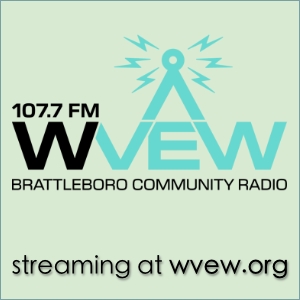Brattleboro Town Manager Peter Elwell on Town Operations
Friday, October 21, 2016
“If you don’t know where you’re going, you’ll end up someplace else.”
~ Yogi Berra
Video Link: https://www.youtube.com/watch?v=nXzv54b5qng
Town Manager Peter Elwell explained the process resulting in the Comprehensive Review of Town Operations (CRTO) began with Town department managers addressing certain questions:
-
What’s working … and needs attention?
-
What needs more resources?
-
What items gets resources for no other reason than we “always have”?
The Town manager took a broader look at issues crossing over departments or needing policy level decisions or “catch up” on infrastructure needs. On the utility side, needs tend to fare better due to the availability of fees to provide funding, as opposed to being solely dependent on the general fund. Decision points involved stopping resources for items no longer needed and adding resources where needs are apparent. This process resulted in a 50 item list contained in a July draft which was open for community input and review by the SelectBoard. The October report now lists 57 items.
The criteria considered were:
-
Can we save money without negatively affecting services?
-
Are there places where we can improve service without increasing costs?
-
Are there areas, specifically ones that have experienced cuts in the past, where a judicious increase in capital investment through tax revenue can result in a significant positive impact to the community?
Some representative examples of how this process has played out include:
-
Employee Benefits (already accomplished) – the goal was to address escalating costs while not reducing the benefit package.
-
In the health benefits area, a Health Reimbursement Arrangement was created by the Town to provide a layer of self-insurance which would contain risk and lower premiums, for a savings of about $100,000.
-
In the retirement area, movement from the defined contribution plan for civilian employees to the Vermont Municipal Employees Retirement System (VMERS) defined benefit plan was found to be more affordable and had good marks for management and benefit payouts, for a savings of about $100,000.
-
-
Solid Waste (already accomplished) – in addition to diverting organic waste from the waste stream through curbside compost and the collection of glass and plastic recyclables, the reduction in the amount of trash allowed for an every two week garbage pickup schedule. Comparing statistics from July, August and September over the last two years shows an increase of 160% in composting, a 60% decline in garbage, saving the Town about $100,000 in costs and providing other regional and environmental benefits. It was noted that families with young children in diapers are challenged by this system.
-
Capital Improvement (short term with longer term implications) is about where we’ve been and where we need to move, all of which involves some pain and decisions. In this area we need to be really clear about what we are not funding and to identify what needs to be done, getting realistic about catching up on needs and funding. How much are we willing to pay?
-
Workers’ Compensation (in progress) – improvement plans are being implemented, but it will be a few years before the beneficial effects will be noticeable due to actuarial smoothing. This area has experienced an increased cost of about $100,000 in recent times.
The Long Term Financial Plan (LTFP) is not a budget. The Town does submit a budget each year for approval at Town Meeting. The budget places the emphasis on holding the line financially and not taxing at a rate we cannot afford. But a budget is done one year at a time. What needs to be recognized is that doing (or not doing) something this year has an effect in out years, positively or negatively. The LTFP tries to address this by looking at five years of history and forecasting out five years, acknowledging that the fifth year of the forecast may be more uncertain as it is based on estimates. An example of a way to lower debt service expenses in the future is to stop borrowing for equipment rather purchasing equipment on a year to year basis in a more planned way. The goal is to know what we have been spending and make reasonable and conservative guesses about the future.
Some examples of conservative assumptions:
-
There will be no substantial increase in the Grand List. While there are small increases every year, the assumption is the List will be flat.
-
While there is confidence of an increase in rental income from space in the municipal building and the Reformer building, the assumption is no increase.
In sum, the forecast is an intentionally pessimistic look so that we can achieve better outcome numbers than predicted. With that in mind, here are the forecasts for the property tax rate increases:
|
Year |
In Cents |
By Percent |
|
FY18 |
6.3¢ |
5.25% |
|
FY 19 |
2.5¢ |
1.97% |
|
FY 20 |
2.6¢ |
2.01% |
|
FY 21 |
2.4¢ |
1.81% |
|
FY 22 |
4.5¢ |
3.39% |
The projected 4.5¢ increase in FY 22 represents the impact of conservative assumption, i.e., “a worst case scenario,” barring, of course, another catastrophe like Tropical Storm Irene.
Town Manager Elwell concluded by reiterating that the actual increase in any given year should be at least a little less than what is currently predicted and by stating his strong confidence that the increase needed in FY22 will be reduced to something more in line with what is currently predicted for FY19, FY20, and FY21.
A Question and Answer period followed.







